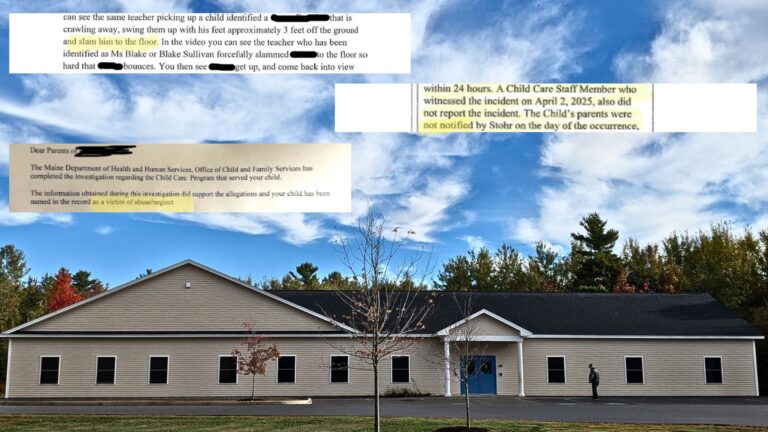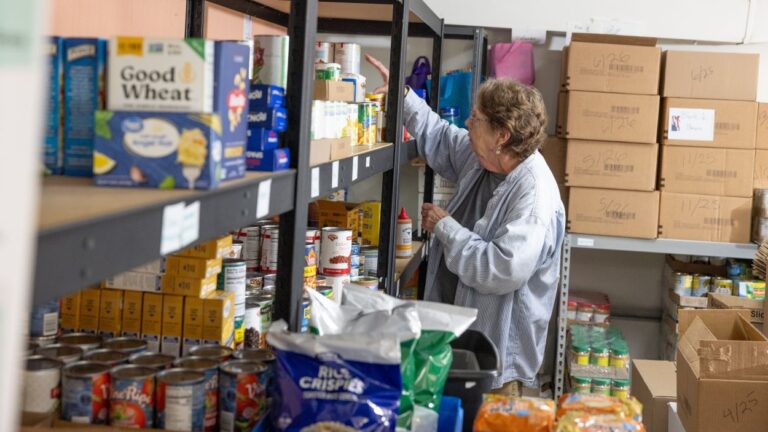Along a stretch of shore I routinely visit, chestnut-gold rockweed and barnacle-encrusted rocks form a natural collage that is quintessential Maine. The sprawling rockweed encompasses two species: willowy manes of knotted wrack and the shorter, branching forms of bladder wrack.
The rockweed has been a part of this seascape for decades, but recently large swaths of bladder wrack turned ashen gray, drying out and dying.
Because rockweed is abundant in Maine, we assume it’s resilient – timeless as the rocks to which it clings. It may not be. As air and water temperatures rise, it will be subjected to more stressors and new pathogens. Already, lax state regulations and enforcement put these vital macroalgae at risk.
Fueling life throughout the marine food web
Rockweed forms “a swaying submarine forest,” Rachel Carson wrote in her 1955 bestseller, “The Edge of the Sea.” What she described as a “fantastic jungle” provides food and safety to more than 150 species of crustaceans and juvenile fish; “all other life exists within their shelter.”
Rockweed withstands the turbulent intertidal zone by fusing tissue to rock, forming holdfasts so tight only storms can dislodge them. Floating rockweed draws seabirds to feed, while beached windrows of wrack attract invertebrates that feed shorebirds and gradually break down the algal nutrients, returning them to the sea.
Acting like a solar inverter, rockweed transforms sunlight and elements in the water into a “currency” that fuels life throughout the marine food web.
For generations, Maine residents have used windrows of storm-swept rockweed to nourish soils. It provides a rich array of minerals, making a valuable soil amendment and, when dried, a nutritious supplement for humans and livestock.
Those traditional uses build resilient local food systems, said Severine von Tscharner Fleming, a seaweed harvester and farmer on Cobscook Bay, adding that intermittent, small-scale harvest can be maintained without endangering the region’s exceptional habitat values.
However, the bulk of Maine rockweed harvested – more than 15 million pounds in 2020 – is not cut for local use. It’s taken by contractors working for corporations like Acadian Seaplants, a self-described “food-chain company” operating in Atlantic Canada and Europe.
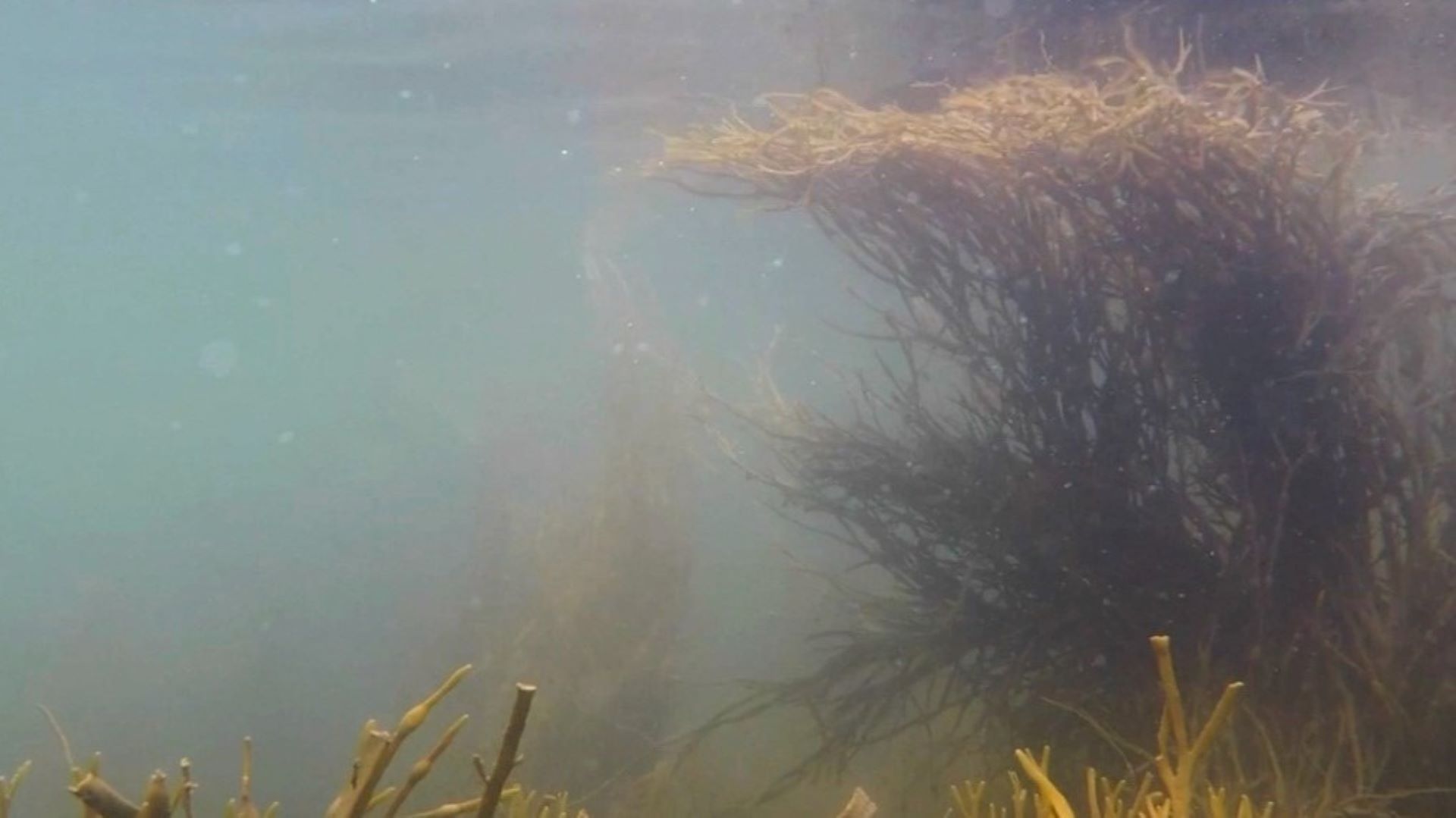
When commercial harvesters first moved into Cobscook Bay in the 1990s, marine ecologist Robin Hadlock Seeley had already spent years there studying a rare periwinkle wholly dependent on rockweed. She quickly realized that rockweed would need a determined defender. “I’m trying to do what Rachel Carson would do if she were still here,” Seeley said.
Seeley helped found the Maine Rockweed Coalition, which drew her gradually into the politicized realm of seaweed management, and ultimately into litigation. Following years spent trying unsuccessfully to get policy and regulatory changes, three landowners around Cobscook Bay filed a lawsuit to protect their rockweed from harvest. In a unanimous 2019 decision, Maine’s Supreme Court upheld landowners’ rights to prevent seaweed harvesting where they own the intertidal zone.
In a lawsuit filed earlier this year, the seaweed industry is trying to reverse that decision, arguing that the intertidal zone is public property. The legal drama, though, can distract people from understanding what’s really at stake with rockweed.
Recognizing rockweed’s many ecological values
Maine’s regulatory framework for rockweed is confined to Cobscook Bay. Along the vast majority of the state’s coastline, harvesters can cut where and when they choose, shearing rockweed down to 16 inches. With a tall specimen, Seeley calculated, that would amount to 72 percent of its height and 90 percent of its biomass.
Rockweed can regain biomass within a few years following a harvest, but – as with a topped tree – new growth tends to be lateral and bushy. Rockweed’s habitat value depends in part on its three-dimensional structure, the height and canopy of those intertidal “trees.” Widespread harvesting changes the ecosystem structure, and – as the Department of Marine Resources (DMR) acknowledged in a 2014 Rockweed Management Plan that was drafted but never adopted – the state does not yet know what the cumulative and long-term effects of those changes might be.
Widespread commercial harvesting would never happen with kelp beds or eelgrass beds, Seeley said, because people recognize their critical role as “blue carbon” (absorbing and storing atmospheric carbon dioxide) and as nursery grounds for marine species. “Somehow we need to communicate (that) rockweed beds are just as important.”
Because of its prevalence, rockweed absorbs and stores at least eight times more carbon than eelgrass beds, and it may play a role in moderating ocean acidification. Maine’s Climate Action Plan calls on the state to “explore the opportunity for formal blue-carbon storage incentives” that would encourage “blue-carbon habitat conservation and restoration.” Maine could potentially expand its “current use” tax laws, for example, to provide a small tax break for landowners who keep their rockweed beds as protected marine habitat.
Such a measure presumes that DMR enforces harvesting restrictions, which Seeley claims does not happen. Jeff Nichols, DMR’s communications director, said 13 seaweed harvesting citations issued in the past five years all were related to whether the harvester had a valid permit. None involved cutting on sites without landowner permission or cutting seaweed lower than the permitted height.
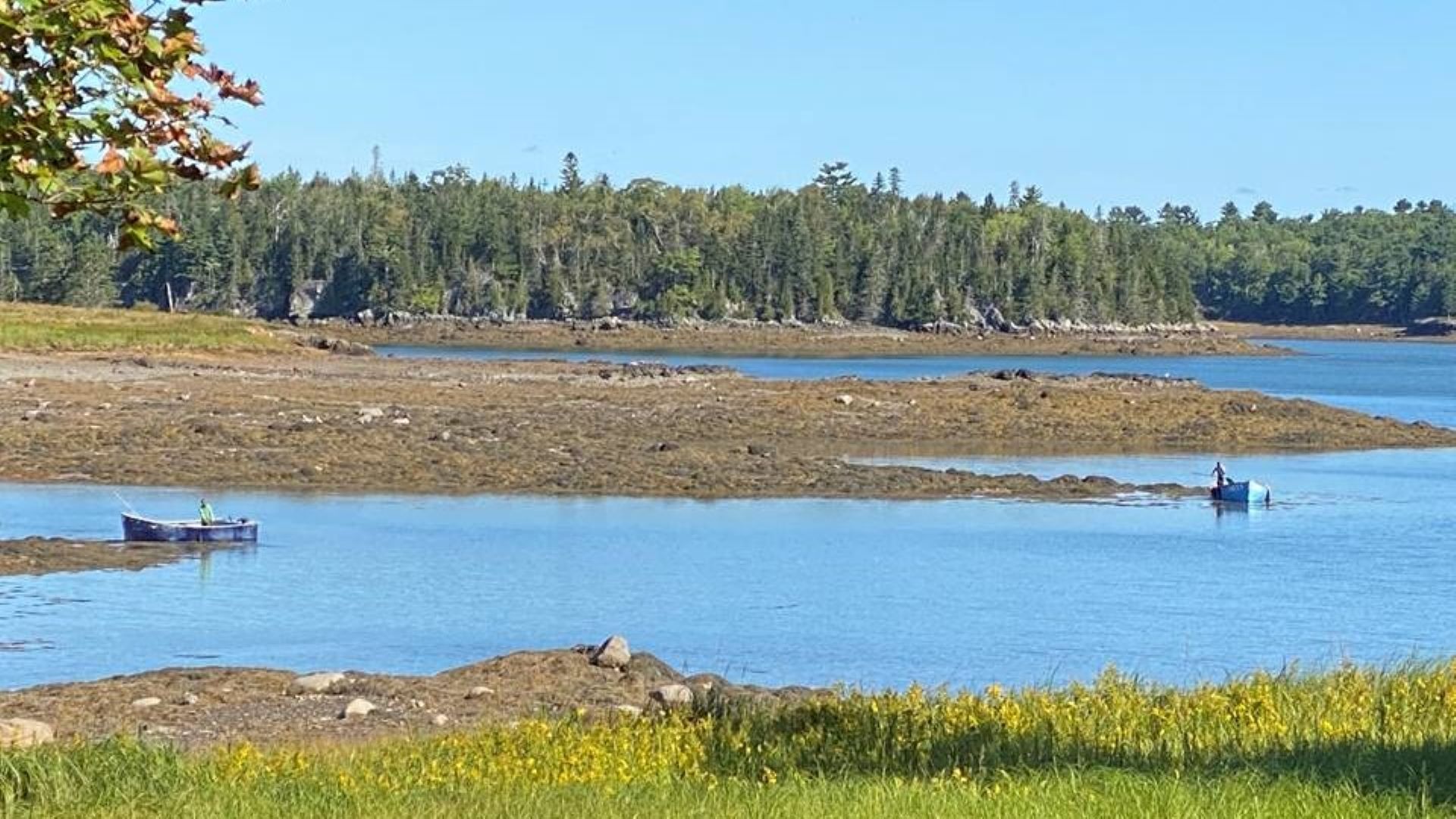
The agency declined to prosecute an individual in 2019 caught harvesting without the landowner’s permission, Seeley noted, claiming that the financial value of the seaweed harvested was too low. “If that’s their rationale,” she said, “why would they ever prosecute?”
Implementing blue carbon incentives and enforcing harvesting rules will take a greater commitment to rockweed management than DMR has demonstrated. Asked if the agency had convened any stakeholders since its 2014 working group, Nichols wrote that one meeting of the Seaweed Fisheries Advisory Council occurred in July 2019 but “given the fact that the DMR position that would staff that group has remained vacant since then, none have taken place since that time.”
Through a small surcharge on annual landings, the state operates a Seaweed Management Fund to assist with research and enforcement. It has generated on average $24,000 annually the past four years, Nichols reported, but roughly $20,000 goes to fund part of a DMR marine scientist position (clearly not the still-vacant, seaweed-focused one).
Why is DMR not directing some of those funds to research long-term impacts of repeated rockweed harvests? The last grant awarded for outside research was $10,000 in 2018. Funds also could go toward creating a reporting mechanism within DMR for seaweed concerns.
A precautionary approach
Agencies such as the National Park Service and U.S. Fish and Wildlife Service already prohibit wild rockweed harvest on their intertidal lands. Maine could extend a “no cut” provision to lands in the state’s Conservation Lands Registry. That measure alone, Seeley believes, would help preserve a patchwork of intact habitat until more is known about the long-term ecological effects of rockweed harvesting.
Fleming would like to see stronger provisions to ensure that the rockweed harvested within Maine goes into high-value, local production – rather than getting exported as cheap raw goods to Canada. That vision fits well with the state’s commitment to building a resilient local food system.
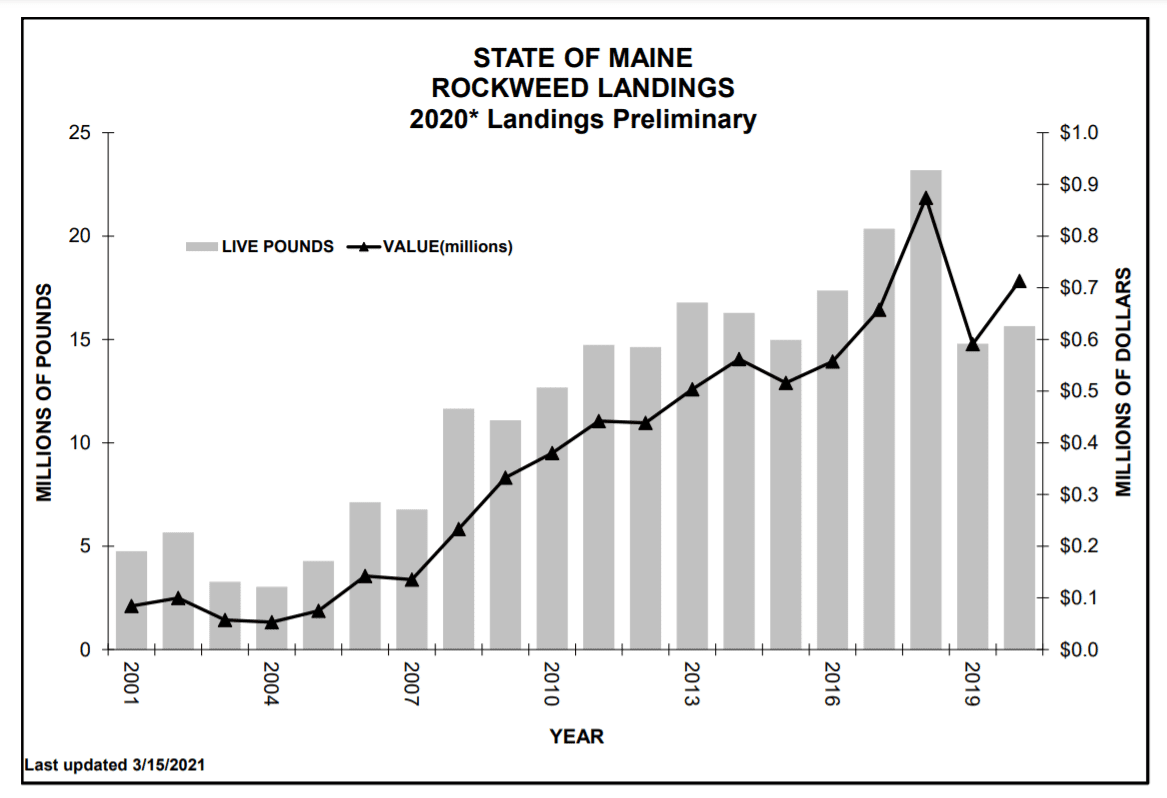
Enacting both these changes could help rockweed cope with more frequent and severe storms, marine heat waves and new diseases. As climate impacts intensify, we need to support ecosystems from the bottom up. Rockweed holds the fate of many species in its swaying fronds. By sheltering it, we will indeed help “all other life” – including our own.





